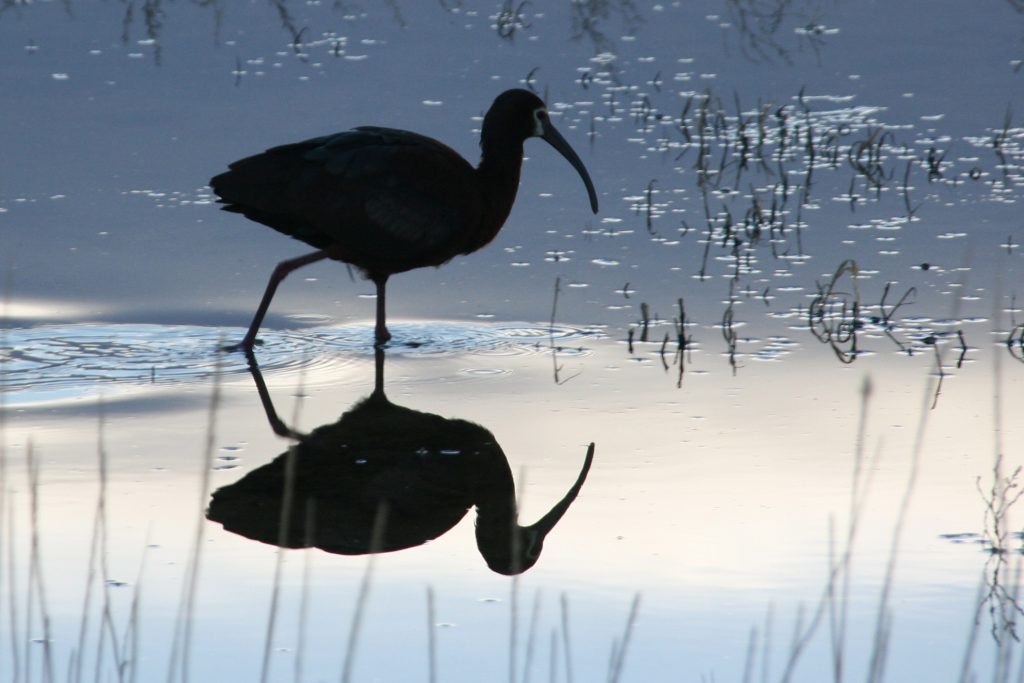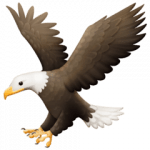By Zaylah Pearson-Good. Photography by Cary Aloia.
Scattered throughout vast agricultural fields, shrublands, grasslands, and meadows, are some of the San Luis Valley’s (SLV) most vulnerable and vital ecosystems. Wetlands, the transition ecosystems between upland and aquatic areas, filter pollutants and sediments from water and soils, acting like the kidneys of our planet.
These soggy, vibrant ecosystems also protect against major flooding events by absorbing excess water, slowing its velocity, storing it, and slowly releasing it back to the land.
Wetlands make our Valley more resilient against climate change by retaining carbon, creating buffers during wildfires, recharging the aquifer, and mitigating the impacts of drought. Furthermore, countless species depend on these ecosystems for nourishment and habitat. According to the Colorado Wetland Information Center, though riparian wetland areas account for only 2% of Colorado’s total acreage, nearly 80% of all wildlife rely on them during their lifecycle. Wetlands are also a haven for our state’s most at-risk species, like the Southwestern willow flycatcher, yellow-billed cuckoo, boreal toad, Rio Grande chub and sucker, and 100 rare plant species.

In the SLV, wetlands are also critical stopover habitats for migratory ducks, shorebirds, waterbirds, and the sandhill crane, as they travel thousands of miles between their wintering and breeding grounds. Expending tremendous amounts of energy, migratory birds need SLV wetlands to rest and rejuvenate before journeying on. The Valley is also an important waterbird and waterfowl production area in Colorado, and a priority wetland area under three national bird conservation plans.
Despite their immeasurable value, wetlands are suffering. Local biologists Cary Aloia and Jenny Nehring of Wetland Dynamics have spent decades monitoring and managing wetlands in the Valley. They report a shocking 50% decline in wetlands across the region since 1984. This dramatic drop is a result of many factors including groundwater mining of the aquifer, changes in the irrigation season resulting from groundwater regulations, changes from flood to sprinkler irrigation, and climate change.
Hydrology forever changed in the SLV with the arrival of European farmers in the 1800s. With limited surface water reserves, agriculturists began to explore groundwater resources to expand their farms and provide some stability to their operations. Wells were established in both the unconfined and confined aquifer. As detailed in Aloia and Nehring’s SLV Wetland and Wildlife Conservation Assessment (SLVWWCA), artesian water was also discovered, leading to the development of nearly 7,000 artesian wells by 1970. Due to extensive irrigation, the unconfined aquifer has been below capacity since the mid-1980s and 1990s, and the confined aquifer below capacity since 1950. Groundwater shrinkage has caused some artesian wells, springs, and wetlands to dry up completely.
Currently, the SLV is believed to have the nation’s heaviest concentration of center-pivot sprinklers, supporting robust potato, barley, alfalfa, and hay fields. While sprinklers are more efficient and user-friendly, they don’t support wetland health. Aloia explains that the older, more traditional practice of flood irrigation benefits aquatic ecosystems because it mimics natural processes that have evolved over thousands of years, usually within the historic floodplain of the streams. “Continuing to support farmers and ranchers that utilize flood irrigation is key to the sustainability of wetlands and ranch land,” says Aloia. Historic SLV ranches still use flood irrigation through acequias (ditches or canals), preserving a small slice of critical habitat.

Nehring and Aloia point to climate change as another cause of wetland decline. Intense, unseasonal storms, less precipitation, and hotter, dryer, and windier periods combine to stress SLV hydrology. A shift in climate is also causing waterfowl and sandhill cranes to migrate earlier in the spring to the SLV. Since the irrigation season has yet to start upon their arrival in February, the exhausted birds arrive to land with limited water resources. Scarce resources can spur overcrowding, stress, and disease for birds.
In response to dwindling water resources, the Rio Grande Water Conservation District (RGWCD) is now accepting applications for the state’s Groundwater Compact Compliance and Sustainability Fund, which aims to reduce SLV groundwater withdrawals by retiring irrigation wells/farmland. Pulling from a $30 million fund, RGWCD will pay $3,000 per acre-foot to those willing to retire their wells in the SLV (learn more at rgwcd.org/announcements). This initiative is a way to help farmers offset potential future losses from shutting off wells and could save thousands of acre-feet of water from being pumped each year.
While the conservation strategy is promising in some regards, Nehring and Aloia are worried that it’s being rushed. “There’s a ticking clock on getting the $30 million out the door, encouraging quick action and hasty decisions. There’s little time to evaluate and choose what land makes the most sense to dry up, it’s more about who is first to get their application in the door,” says Nehring. The biologists would like to see well-thought-out strategies for long-term health of the retired ranches and adjoining wetlands, opposed to applicants being accepted on a first-come first-served basis. As some farmlands support valuable wetlands, especially hay meadow wetlands, vital habitat could be lost through random well retirement.
Aloia adds, “We are in favor of a strategic, long-term conservation plan that helps sustain our aquifer. That will include retiring some wells, but we want to do it in a partnership with everyone. This ‘buy and dry’ idea needs to be carefully considered with a long-term view. We want a thoughtful approach to where those retired circles are, and the impact to the surrounding area.” Collaborating with agriculturalists is especially critical as some 70% of all seasonal wetlands exist on private lands in the SLV.
As climate change and human activity continue to shape the Valley’s hydrology, countless species are depending on the development of effective wetland conservation strategies. Reversing wetland decline requires collaboration from a variety of stakeholders, both public and private, devoted to the long-term ecological health of the SLV. Citizens can also support the movement by supporting public land agencies, being mindful when recreating in these ecosystems, and stewarding wetlands on their property. “We need to change the way the public sees and values wetlands,” says Aloia. We need to value wetlands as though they are a vital organ of our planet. Without this organ, life cannot flourish.


